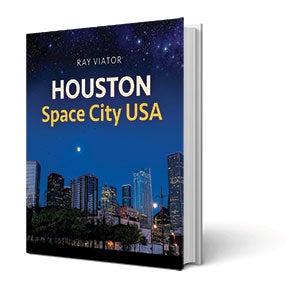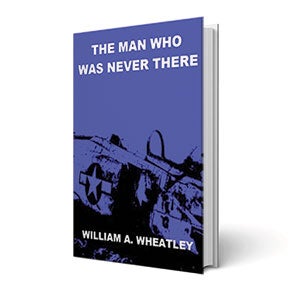Alumni Books - Summer 2019

Houston, Space City USA
Ray Viator
Texas A&M University Press, 2019
Ever since 1965, when Houston began serving as Mission Control for NASA’s manned space flights, the city’s name has been the first word astronauts utter when they do something historic — like, say, take the first steps on the moon. Ray Viator grew up enthralled by the starring role Houston played in the Space Age. As a journalist and photographer, he made it his own mission to document the ways the city still serves as NASA’s nerve center when it comes to sending people into space. The result, “Houston, Space City USA,” is what Viator calls a “visual celebration” of Houston’s lunar legacy.
It’s been half a century since the Apollo 11 mission, but the photos in Viator’s collection show that Houston’s enthusiasm for space has waned little since those heady days. Everywhere you look, outer space makes its home in this terrestrial city, from the space science department at Rice — the nation’s first when it was launched in 1963 — to 1980s-era tourism posters proclaiming “Houston: First word from the moon,” to the countless tributes on murals and plaques across town, down to the patches on Houston police uniforms that read “Space City U.S.A.” Many of Viator’s photos capture the moon itself juxtaposed with notable Houston landmarks. He captions the book’s final photo with a haiku: “Exploring Houston/ I find the moon everywhere/ Hiding in plain sight.”
Editor’s note: While Viator is not a graduate of Rice, we included the book here because Rice itself plays a starring role.

The Man Who Was Never There
William A. Wheatley ’66
W&B Publishers, 2018
William A. Wheatley has real-life experience in not being there. He got an early start in military intelligence during his freshman year at Rice, when he joined the Navy ROTC just as the Cuban missile crisis broke out, and was sent to Guantanamo Bay to help analyze aerial photos of possible missile facilities. The summer before his senior year, he did surveillance in Cambodia from the back seat of a Navy jet doing low-level flyovers above the jungle. But officially, as he puts it, he was never there.
These experiences provided the raw material for his first novel, “The Man Who Was Never There.” After a career spent keeping secrets, Wheatley acknowledges openly that his protagonist, Arthur Cornwallis Harris III, is a not so thinly veiled version of himself. But Harris gets in a little more trouble than Wheatley did, as far as we know. Harris is shot down while flying his own jet over Cambodia and must rely on his Boy Scout wilderness training to survive and eventually escape from the jungle. Like Wheatley, Harris must be prepared — and leave no trace.
“You may be curious about the path I followed, but I don’t want to have to kill you, so I can’t tell you my own story,” Wheatley explains in the book’s preface. “This work is fiction, based very loosely (but very directly) on the real world and times in which I have lived. However, some of the events are described exactly as they happened.”
– Jennifer Latson
